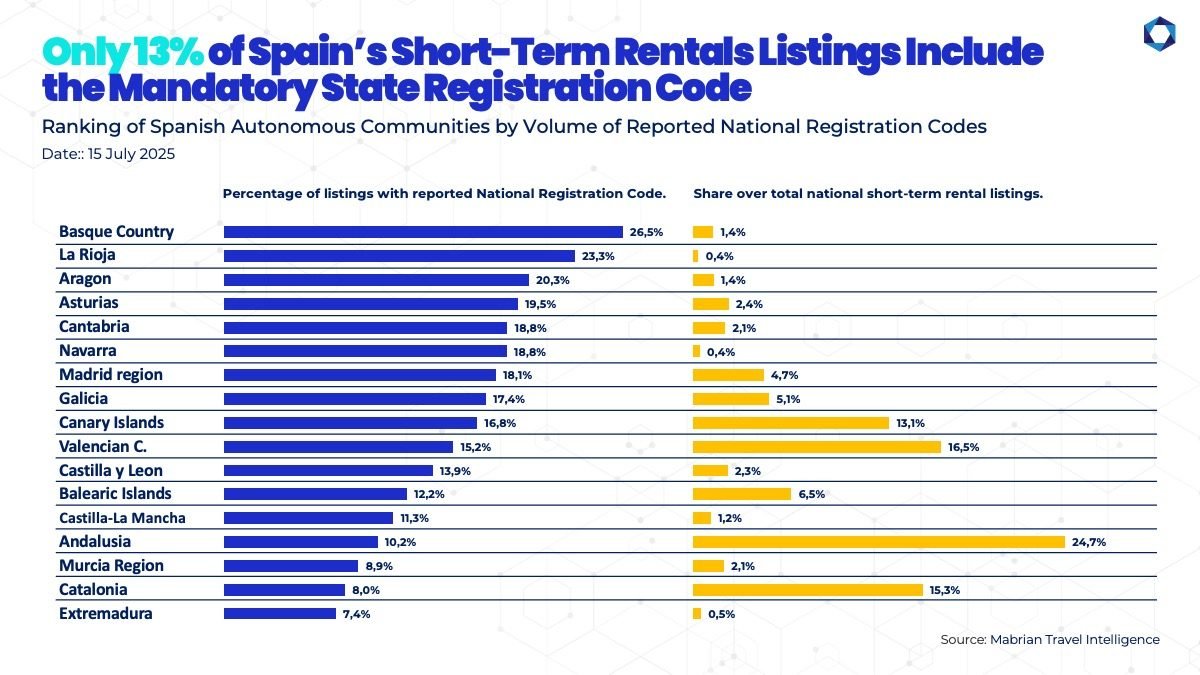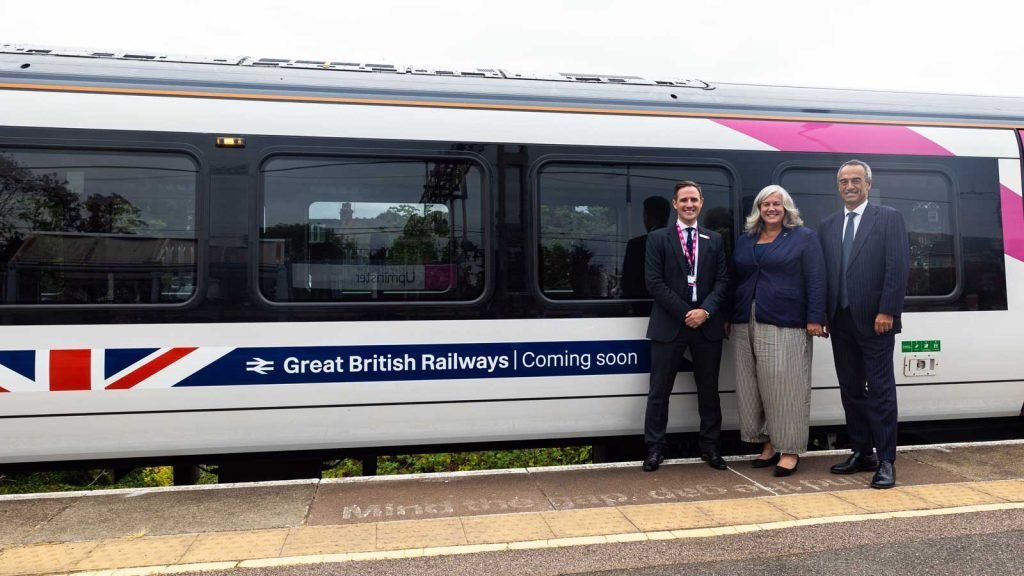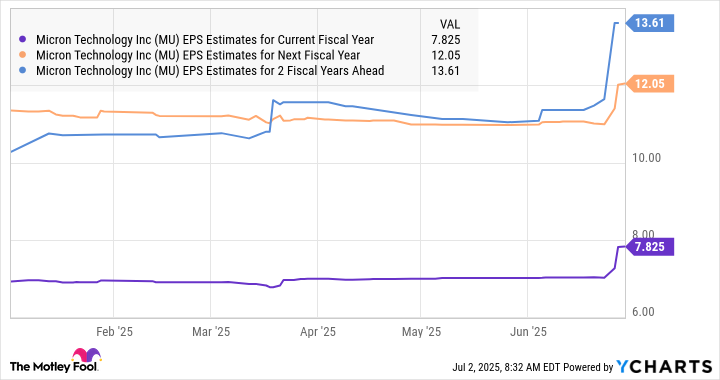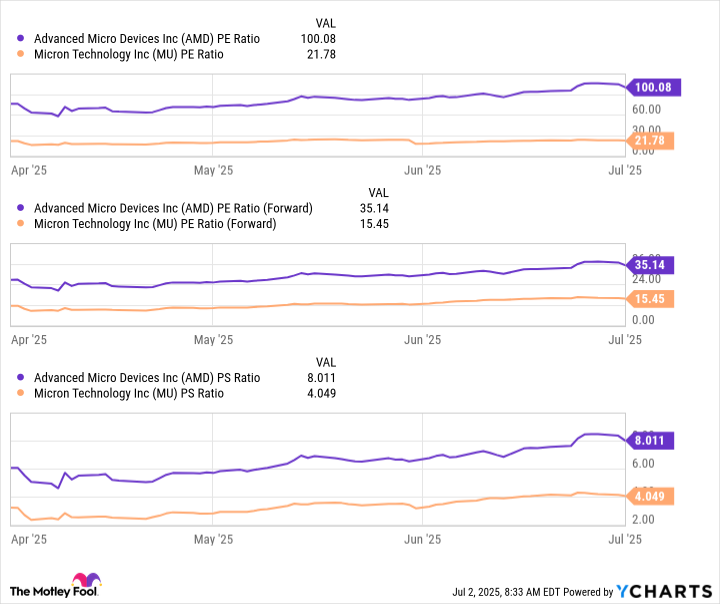Travel Trends
Better Artificial Intelligence (AI) Stock: Advanced Micro Devices vs. Micron Technology

The demand for artificial intelligence (AI) chips has been increasing at a nice pace in the past few years. Major cloud service providers (CSPs), hyperscalers, and governments have been spending a lot of money on shoring up their cloud infrastructure so that they can run AI workloads.
This explains why the businesses of Advanced Micro Devices (AMD -0.45%) and Micron Technology (MU 0.26%) have gained terrific traction in recent quarters. As a result, shares of both these chip designers have clocked impressive gains in the past three months. AMD has jumped 32% during this period, and Micron stock is up 36%.
But if you had to put your money into just one of these AI semiconductor stocks right now, which one should it be? Let’s find out.
Image source: Getty Images.
The case for Advanced Micro Devices
AMD designs chips that go into personal computers (PCs), servers, and gaming consoles, and for other applications such as robotics, automotive, and industrial automation. AI has created impressive demand for the company’s chips in these areas, leading to healthy growth in its top and bottom lines.
The company’s revenue in the first quarter of 2025 was up by 36% from the year-ago period to $7.4 billion, while non-GAAP earnings per share shot up by 55% to $0.96. This solid growth was primarily driven by the data center and PC markets, which accounted for 81% of its top line. AMD’s data center revenue was up by 57% from the year-ago period, while the PC business reported a 68% increase.
In the data center business, AMD sells both central processing units (CPUs) and graphics processing units (GPUs) that are deployed in AI servers. The demand for both these products is strong, which is evident from the terrific growth the company recorded in Q1. Importantly, AMD estimates that the market for AI accelerator chips in data centers could create a $500 billion annual revenue opportunity in 2028.
So, the outstanding growth that AMD clocked in the data center business in Q1 seems sustainable, especially considering that it generated $12.6 billion in revenue from data center chip sales last year — nearly double the 2023 revenue. AMD is pushing the envelope on the product development front with new chips that are expected to pack in a serious performance upgrade and may even help it take market share away from Nvidia.
Meanwhile, AMD’s consistent market share gains in PC CPUs make it a solid bet on the secular growth of the AI PC market, which is expected to clock an annual growth rate of 42% in shipments through 2028. All this indicates that AMD is on track to take advantage of the growing adoption of AI chips in multiple applications, and that’s expected to lead to an acceleration in its bottom-line growth.
Consensus estimates are projecting a 17% jump in AMD’s earnings this year, followed by a bigger jump of 45% in 2026. As such, this semiconductor company is likely to remain a top AI stock in the future as well.
The case for Micron Technology
Micron Technology manufactures and sells memory chips that are used for both computing and storage purposes, and the likes of AMD and Nvidia are its customers. In fact, just like AMD, Micron’s memory chips are used in AI accelerators such as GPUs and custom processors, PCs, and the smartphone and automotive end markets.
Micron has been witnessing outstanding demand for a type of chip known as high-bandwidth memory (HBM), which is known for its ability to transmit huge amounts of data at high speeds. This is the reason why HBM is being deployed in AI accelerators, and the demand for this memory type is so strong that the likes of Micron have already sold out their capacity for this year.
Not surprisingly, Micron is ramping up its HBM production capacity, and it’s going to increase its capital expenditure to $14 billion in the current fiscal year from $8.1 billion in the previous one. The company’s focus on improving its HBM production capacity is a smart thing to do from a long-term perspective, as this market is expected to grow to $100 billion in annual revenue by 2030, compared to $35 billion this year.
Micron’s memory chips are used in PCs and smartphones as well. Apart from the growth in unit volumes that AI-enabled PCs and smartphones are expected to create going forward, the amount of memory going into these devices is also expected to increase. CEO Sanjay Mehrotra remarked on the company’s latest earnings conference call:
AI adoption remains a key driver of DRAM content growth for smartphones, and we expect more smartphone launches featuring 12 gigabytes or more compared to eight gigabytes of capacity in the average smartphone today.
Similarly, AI-enabled PCs are expected to sport at least 16GB of DRAM to run AI workloads, up by a third when compared to the average DRAM content in PCs last year. So, just like AMD, Micron is on its way to capitalizing on multiple AI-focused end markets. However, it is growing at a much faster pace than AMD because of the tight memory supply created by AI, which is leading to a nice increase in memory prices.
The favorable pricing environment is the reason why Micron’s adjusted earnings more than tripled in the previous quarter to $1.91 per share on the back of a 37% increase in its top line. Analysts are forecasting a 6x jump in Micron’s earnings in the current fiscal year, and they have raised their earnings expectations for the next couple of years as well.
MU EPS Estimates for Current Fiscal Year data by YCharts.
So, Micron stock seems poised to sustain its impressive growth momentum, thanks to the AI-fueled demand for HBM.
The verdict
Both AMD and Micron are growing at solid rates, with the latter clocking a much faster pace thanks to the favorable demand-supply dynamics in the memory industry. What’s more, Micron is trading at a significantly cheaper valuation compared to AMD, despite its substantially stronger growth.
AMD PE Ratio data by YCharts.
Investors looking for a mix of value and growth can pick Micron over AMD, considering the former’s attractive valuation and the phenomenal earnings growth that it can deliver. However, one can’t go wrong with AMD either. The company should be able to justify its valuation in the long run, considering its ability to clock stronger earnings growth.
Travel Trends
More than 1.1 million Spain’s tourist rental beds could be removed from the market this August

BARCELONA, SPAIN – More than 1.1 million tourist rental beds in Spain could become unavailable starting this next August if the mandatory registrations in the Spanish National Registry for Tourist and Seasonal Rentals, introduced by the Ministry of Housing and Urban Agenda, are not completed. This would require online platforms to remove listings that do not include the Rental Registration Number (NRA, for its acronym in Spanish). These beds represent 87% of the total national short-term rental (STR) offering active in Spain this summer, as of July 15. Mabrian reached this conclusion after analysing how Spain’s accommodation supply could be impacted by the recently announced agreement between the Ministry and Airbnb, which obliges the platform to remove all listings that do not include the NRA as of August 1, following a 10-business-day grace period after hosts are notified to update their listings accordingly.
The Spanish National Registry for Tourist and Seasonal Rentals, in effect since July 1, takes precedence over all regional and municipal regulations, meaning that no property may legally operate as tourist accommodation unless it is registered in the national database – even if it holds a regional or municipal license.
Mabrian, part of The Data Appeal Company – Almawave Group, studied Airbnb listings published in mid-July across Spain’s 17 autonomous communities and two autonomous cities, comparing how many STR properties reported a local license and how many had already included the NRA in their descriptions. The results indicate that, as of July 15, only 13% of the total short-term rental units listed and available in Spain had completed the state registration process and updated their listings with the corresponding Unique Identification Number.
“Although STR hosts were informed of the deadlines and the mandatory nature of the National Registry by July 2025, most only began the registration process when it came into force, concentrating a large volume of applications into a very short period,” comments Carlos Cendra, Partner and Director of Marketing and Communications at Mabrian.
The analysis conducted across all Spanish regions reveals notable differences among autonomous communities. In Andalusia, the region with the largest number of STR accommodations in the country, only 10.2% of total Airbnb listings include the NRA, despite 83% already having regional licenses. In Catalonia, the third-largest region by STR volume, just 8% of listings have obtained the national code, although 75.6% hold local or regional permits.
Similar patterns emerge in the Valencian Community, the Canary Islands, and the Balearic Islands – regions that also have high concentrations of STR properties – where 15.2%, 16.8%, and 12.2% of available listings, respectively, have included the NRA.

An opportunity to foster STR regularisation in Spain
According to Mabrian’s latest data, 67% of STR listings in Spain include a local or regional license number, but only 20% of those have completed the process to obtain the national registration code. In practice, this means that “more than 1.1 million short-term rental beds are currently operating outside of the regulatory framework and could be removed from the market,” warns the Mabrian spokesperson.
“The data show that the registration process is underway, but it is gradual and will take time,” adds Cendra. “In any case, the possibility of losing such a significant share of the tourist accommodation supply, in the middle of the summer season, must be considered not only from a carrying capacity perspective, but also in terms of its potential impact on the traveller experience and on local economies that depend on seasonal tourism.”
One important aspect to highlight is that the national registry is accelerating the formalisation of the STR sector in regions with a higher proportion of listings lacking municipal or regional licenses. For example, in the Madrid region, of the approximately one-third of STR units on Airbnb that report a local or regional license, 57.7% have already obtained the national code. Progress is also notable in other communities such as Galicia, Aragón, Asturias, Cantabria, Navarra, and La Rioja, where the NRA has been added to more than 30% of listings that already had a local license – figures that represent between 50% and 60% of the total STR supply in those regions.
The article More than 1.1 million Spain’s tourist rental beds could be removed from the market this August first appeared in TravelDailyNews International.
Travel Trends
As c2c transitions to public ownership, Trenitalia looks ahead to a new chapter in UK rail

LONDON – As the c2c rail franchise transitions to public ownership under the Department for Transport on Sunday 20 July, formally becoming c2c Railway Limited, Trenitalia reflects on a
meaningful and productive chapter in its UK journey – one marked by sustained investment, operational innovation and a shared commitment to delivering high-quality rail services – while reaffirming its continued role in supporting the long-term development of the UK transport sector and contributing to national and regional economic growth.
While rail industry reform continues to take shape, Trenitalia remains firmly committed to its future in the UK market and to maintaining investment across the broader mobility ecosystem. This includes its recent application to operate high-speed services between London and Paris, forming part of a broader commitment to building a more interconnected and sustainable European rail network.
As part of the FS Group, with more than a century of rail experience across Italy and internationally, Trenitalia’s transition from franchise operator marks not an exit, but a repositioning to strategic partner, ready to contribute its expertise to the vision set out by Great British Railways and its interaction with local bodies while running the railway as a national network. In doing so, Trenitalia continues to foster partnerships with UK-based SMEs, universities and innovation hubs, supporting knowledge exchange and long-term sector resilience.
Since acquiring c2c in 2017, our goal was ambitious: to translate the skills, discipline and customer-focused excellence developed in the highly competitive Italian market for British customers. This has included a significant focus on service quality, technological advancement and long-term value for passengers. Over the past eight years, c2c has supported over 315 million passenger journeys and operated 935,000 services and has been consistently recognised as one of the UK’s most punctual train operators, achieving a 94.5% overall customer satisfaction score in most recent Transport Focus survey period – the highest of any UK train operating company.
A substantial programme of investment underpinned this performance. Highlights include the introduction of 10 new Alstom electric trainsets, representing a £100 million commitment to fleet
modernisation, and the delivery of the UK’s first fully contactless national rail network, now used for over 10,000 daily taps across the c2c route. In parallel, improvements to ticketing with Trenitalia’s fully digital PICO system, replacing multiple outdated legacy UK ticket systems, passenger compensation, and upgrades to station facilities have further contributed to a smoother, more modern customer experience.
Trenitalia’s management of c2c has also played a material role in supporting the wider regional economy and community. Each weekday, over 25,000 commuters rely on c2c services into London,
with independent analysis showing that rail travel contributes approximately £590 million annually to businesses in the East of England. Operational excellence has remained a consistent focus, supported by effective fare compliance measures that recovered £596,000 from evasion in the most recent year.
c2c has also earned multiple independent accreditations recognising its commitment to passenger and staff safety, including certifications in Health & Safety, Safeguarding, Secure Stations and the White Ribbon initiative. Complementing these efforts, working in lockstep with the government through targeted investments such as the Station Improvement Fund and the Customer & Communities Investment Fund (CCIF) has significantly enhanced the passenger experience by upgrading facilities and services across the network’s stations.
Ernesto Sicilia, Managing Director at Trenitalia UK, commented: “Our management of c2c has been grounded in a resolve for continuous improvement and being in tune with the needs of the communities we serve. As the franchise moves to public ownership, we acknowledge both the progress made and the ongoing challenges of unifying a fragmented rail industry. In the meantime, we will continue to support and deliver services on the Avanti West Coast franchise until it too transitions to public ownership in 2026. While our role as operator is ending, our dedication to sharing knowledge, supporting innovation and fostering collaboration remains unchanged. We recognise that building a resilient and integrated rail network takes time and Trenitalia is determined to play a constructive part in that journey.”
As the c2c franchise returns to public hands, Trenitalia extends its sincere appreciation to the teams, passengers and industry partners who have contributed to this journey. This has been a period defined by progress, collaboration and mutual learning – hallmarks of a public service delivered with purpose. Trenitalia takes great pride in the achievements realised during this time and looks forward to contributing to the next chapter of UK rail.
The article As c2c transitions to public ownership, Trenitalia looks ahead to a new chapter in UK rail first appeared in TravelDailyNews International.
Travel Trends
Australia’s Travel Surge to the US: Hawaii, New York, and Alaska Lead the Way in 2025

Monday, July 21, 2025
New statistics have shown a notable shift in travel sentiment toward the United States, particularly from Australia, where interest in visiting the country had significantly declined after the re-election of former President Donald Trump and the policies that followed. Despite the political climate deterring many travelers, recent figures suggest that a growing number of Australians are now looking towards the US as a favored travel destination once again.
Year-on-Year Increase in Travel from Australia to the USA
According to the latest Travel Trends Report by the Australian Travel Industry Association (ATIA), travel from Australia to the USA has increased by nearly five percent year-on-year. More notably, travel between May 2024 and May 2025 has shown an eight percent increase, indicating a resurgence in interest. This growth comes as the broader travel landscape continues to evolve and as political concerns that once deterred potential visitors appear to have somewhat lessened.
The report, while highlighting the overall trend toward more Australian travelers heading to the US, also provides insights into the specific destinations that are attracting the most attention. Australians seem eager to return to their familiar American haunts, while others are venturing to new and perhaps less explored locations within the 50 states.
Honolulu: The Most Popular Destination for Australian Travelers
When asked about their top choice for a holiday destination in the USA, a significant number of Australians expressed a preference for Hawaii, with many citing it as the ideal location for a getaway. In an exclusive survey conducted by Nine, respondents overwhelmingly chose Hawaii as their first choice, making it the most popular US destination for Australians in 2025.
Approximately 25% of respondents indicated that they would prefer to visit Hawaii, with many emphasizing its accessibility as the closest entry point from Australia to the US. Hawaii, known for its tropical landscapes, beautiful beaches, and rich cultural history, has long been a favorite destination for Australians, and it continues to maintain its allure as a perfect vacation spot.
For some, Hawaii feels like an extension of their own territory. One survey respondent mentioned, “Hawaii is by far the best place,” while another jokingly stated that they “don’t consider Hawaii as part of the US anyway,” emphasizing the island state’s unique position in the Pacific and its special status in the hearts of many Australian travelers.
The Appeal of New York, California, and Alaska
Following Hawaii, New York emerged as the second most popular destination in the Nine survey, with 21% of participants indicating a strong preference for the bustling metropolis. New York’s iconic landmarks, such as the Statue of Liberty, Central Park, and Times Square, have long drawn visitors from across the globe, and Australians are no exception. The allure of Broadway, world-class museums, and diverse cultural experiences contribute to its appeal, particularly for those visiting the US for the first time.
Next in line were Alaska and California, which came in as the third and fourth most popular states for Australian travelers. These two locations reflect a blend of contrasts, with Alaska offering the allure of vast wilderness, glaciers, and a unique environment for adventure seekers, while California presents sunny beaches, vibrant cities like Los Angeles, and famous attractions such as Disneyland and the Golden Gate Bridge. 19% of survey respondents expressed interest in exploring Alaska’s rugged landscapes, while 16% leaned towards the laid-back coastal appeal of California.
One respondent shared their enthusiasm for the famous natural sites in the US, commenting that Yosemite, the Grand Canyon, and Las Vegas are must-visit places that they would love to experience on their next trip. These destinations, known for their incredible beauty and entertainment value, continue to be on the bucket list for many.
Other US Destinations Gaining Popularity
Despite Hawaii, New York, California, and Alaska dominating the top spots, there were several other notable destinations mentioned by Australian travelers. Some expressed interest in Tennessee and the southern states, while others listed Louisiana and Missouri as their preferred destinations. The southern states, known for their unique culture, history, and hospitality, have increasingly caught the eye of international tourists, especially those looking for a different side of the US beyond the usual hotspots like California and New York.
A few respondents pointed out their desire to visit New Orleans, Louisiana, particularly for its distinctive French Quarter, jazz music scene, and vibrant cultural festivals like Mardi Gras. Others mentioned the charm of the Midwest and the experience of exploring states like Missouri, which many may not immediately consider when planning a US holiday.
Improving Travel Sentiment in Australia
Recent figures from the Australian Bureau of Statistics (ABS) indicate a strong rebound in travel from Australia, particularly in categories such as holiday travel, business travel, and visits to friends and relatives. Travel for holidays has increased by 12% compared to the previous year, while visits to friends and relatives are up by 15%. Business travel has also shown a positive increase of 8%, signaling a return to international connections and a growing confidence in travel planning.
This growth in outbound travel is particularly encouraging after a noticeable dip in April 2025, when travel figures showed a 6.2% decline compared to the previous month. The upward trend, however, has steadily gained momentum, and many Australians are once again venturing overseas, including to long-haul destinations like the United States.
Some Australians Still Hesitant About US Travel
While the overall sentiment toward US travel has improved, some Australians remain cautious about visiting the country. In response to the survey, several individuals indicated they were still hesitant to travel to the US, citing concerns about safety, political climate, and other factors. One respondent explicitly stated, “I wouldn’t travel to the USA right now, are you absolutely kidding?” and another noted, “I have no interest in going to the US at all.”
This sentiment, although a minority view, highlights that not all travelers feel the same way about visiting the US, especially after a period of political and social unrest that led many to reconsider their travel plans. Some are still wary of the potential risks associated with traveling to a country experiencing fluctuating political and cultural tensions.
The Growing Popularity of US Travel Despite Concerns
Despite the hesitations expressed by a small group, the overall trend toward increased travel to the United States is clear. As Australians increasingly plan their vacations and business trips abroad, the US remains one of the most attractive international destinations. With its iconic cities, diverse landscapes, and abundant opportunities for both leisure and business, the United States continues to be an integral part of the global travel network.
For many Australians, the appeal of visiting iconic locations such as New York, Hawaii, California, and Alaska outweighs the concerns that may have initially deterred them from booking US-bound flights. As the global travel landscape stabilizes and international relations improve, it is likely that even more Australians will consider the US as their destination of choice for the coming years.
Conclusion: A Dynamic Shift in US Travel Sentiment
The recent shift in Australian travel sentiment toward the US, reflected in rising travel numbers and increased interest in US destinations, marks a dynamic change in the post-pandemic travel landscape. While political and social factors have previously deterred some travelers, the increasing optimism toward US travel highlights a renewed sense of possibility and excitement. As more Australians look to explore the vast array of attractions and experiences offered by the United States, it is clear that the country remains a top destination for global travelers. Whether it’s exploring the beaches of Hawaii, the urban energy of New York, or the rugged wilderness of Alaska, the US continues to hold a powerful allure for those looking to venture abroad.
Tags: alaska, Australia, Australian Travel Industry Association, Australian travelers, California, hawaii, International travel, louisiana, New York, Popular Travel Spots, tourism increase, tourism report, travel sentiment, travel trends, US holiday destinations, US Travel, US vacation destinations
-

 AI in Travel16 hours ago
AI in Travel16 hours agoAI Travel Revolution: Must-Have Guide to the Best Experience
-

 Brand Stories1 week ago
Brand Stories1 week agoHow Elon Musk’s rogue Grok chatbot became a cautionary AI tale
-

 Brand Stories2 weeks ago
Brand Stories2 weeks agoVoice AI Startup ElevenLabs Plans to Add Hubs Around the World
-

 Asia Travel Pulse2 weeks ago
Asia Travel Pulse2 weeks agoLooking For Adventure In Asia? Here Are 7 Epic Destinations You Need To Experience At Least Once – Zee News
-

 AI in Travel2 weeks ago
AI in Travel2 weeks ago‘Will AI take my job?’ A trip to a Beijing fortune-telling bar to see what lies ahead | China
-

 Brand Stories2 weeks ago
Brand Stories2 weeks agoChatGPT — the last of the great romantics
-

 The Travel Revolution of Our Era1 month ago
The Travel Revolution of Our Era1 month agoCheQin.ai Redefines Hotel Booking with Zero-Commission Model
-

 Brand Stories2 weeks ago
Brand Stories2 weeks agoHumans must remain at the heart of the AI story
-

 Destinations & Things To Do16 hours ago
Destinations & Things To Do16 hours agoUntouched Destinations: Stunning Hidden Gems You Must Visit
-

 Brand Stories2 weeks ago
Brand Stories2 weeks agoChildproofing the internet is a bad idea



